Film trailer for All the Streets Are Silent: The Convergence of Hip-Hop and Skateboarding (1987-1997)
©2021 Elkin Editions, LTD. All Rights Reserved.
In the 1990s, New York street culture, in which music and skateboarding had been slowly gaining momentum locally since the late 1980s, began to attract worldwide attention. In downtown New York, a skateboarding company called Zoo York was started. Eli Morgan Gesner, who was a central figure in the company, narrates All the Streets Are Silent: The Convergence of Hip-Hop and Skateboarding (1987-1997), a documentary film that focuses on New York City street culture from 1987-1997.
Directed by Jeremy Elkin, a lover of skateboarding culture and music, the film is built around a collection of rare archival footage from that era and interviews with key figures active in the New York street scene. This valuable documentary provides a rare glimpse into the roots of current street culture that includes music, skateboarding, fashion, and art.
Yes, the connection between the New York local street scene is incredibly cool, and the culture that emerged from it has definitely influenced the world, as you will learn from this film. We’d like to share an interview with director Jeremy Elkin, who visited Japan for the film’s theatrical release here.
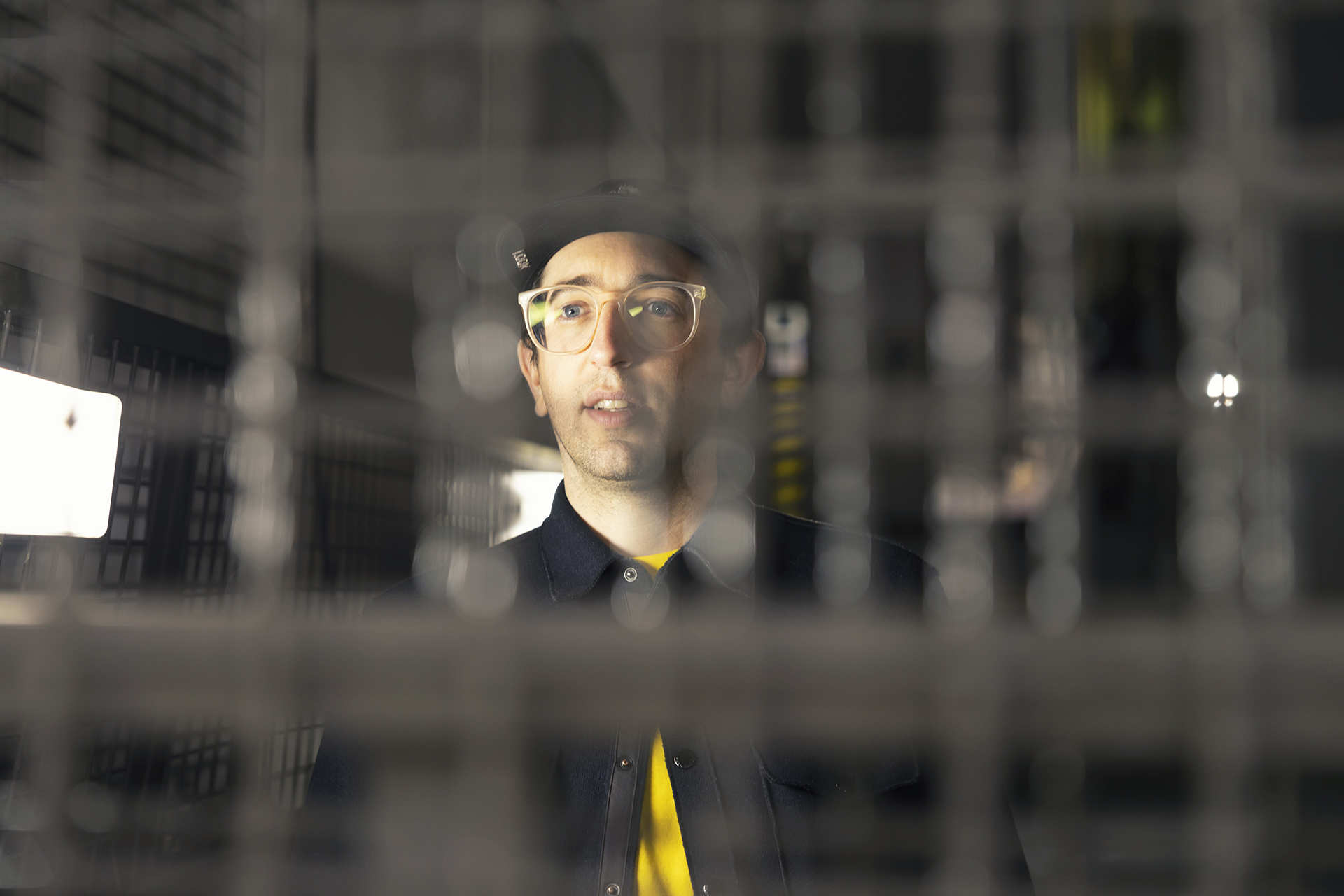
Jeremy Elkin
Born in 1987. From Montreal, Canada. Influenced by his family, Elkin got into skateboarding and music during his teenage years and started shooting skate videos i n Montreal in the 2000s. He then moved to New York City, where he worked as a video producer for VANITY FAIR MAGAZINE. In 2018, he shot and directed a short film for the Brooklyn Museum, The Chronicles of New York City, by French artist JR. In 2017, Elkin started his own video production company, and in 2021, he launched his own video production company with his first feature-length documentary film, All the Streets Are Silent: The Convergence of Hip-Hop and Skateboarding (1987-1997).
https://www.elkineditions.com
Instagram:@jeremyelkin
Filming the Montreal skate scene since the age of twelve
――Let’s talk about your life before you started filming videos. What was your childhood like?
Jeremy Elkin (Elkin): I was born in 1987. I grew up downtown in Montreal, on the west side. Montreal is close to New York. I have three older siblings, my brother Josh, who is fifty now, grew up skating and spinning hip-hop records. When I was born, I didn’t really have a choice, as soon as I could walk, he was teaching me how to stand on a skateboard with all of his friends who skated. Him and my sister Rosetta were friends with Willo Perron, who’s had enormous success in the music industry. They would all go to clubs, DJ at bars, and of course go to New York all the time, so I was inspired by those cultures at very early age. My brother played basketball with the Beastie Boys, etc. Willo and my sister took me to the Rawkus Records office and Supreme in the late 90s for the first time, which were eye opening.
――When did you start taking videos?
Elkin: I started making skate videos when I was around twelve years old. A lot of the skaters were really good but there were no cameras at that time, which would’ve been 1998 or 1999. I thought it would be good to save up and get a camera to start filming them. We would get VHS tapes and watch them, but the skaters we were skating with were better than the tapes from California or wherever, so we had to film them. I then started making skate videos at an early age and it just sort of progressed from there.
――Were you self-taught in your filming?
Elkin: It was all self-taught. With skateboarding, I’m sure it’s the same with hip-hop, when you’re young, you’re around people of all different kinds of backgrounds and age groups. So you start to learn things really quickly, because of the way the scene is.
The only guy in Montreal who filmed skate videos was Eric Lebeau. His videos were unbelievable. I learned a lot from watching him film. Then there’s Barry Walsh and Marc Tison. They’re really heavy into vinyl, skating, boomboxes, dancehall, dub, etc. Everything they ever do has great style, and clarity. They’ve been huge inspirations for me.
――And you moved to New York shortly after?
Elkin: I did. I worked a lot of jobs, anything to make money. I was still making independent skate videos, not sponsored. Then I worked at Vanity Fair magazine for three years. I started a film department there that did videos about the covers, and documentaries and features. After that, I started my business, my own production company. And that’s when I started making All the Streets Are Silent.
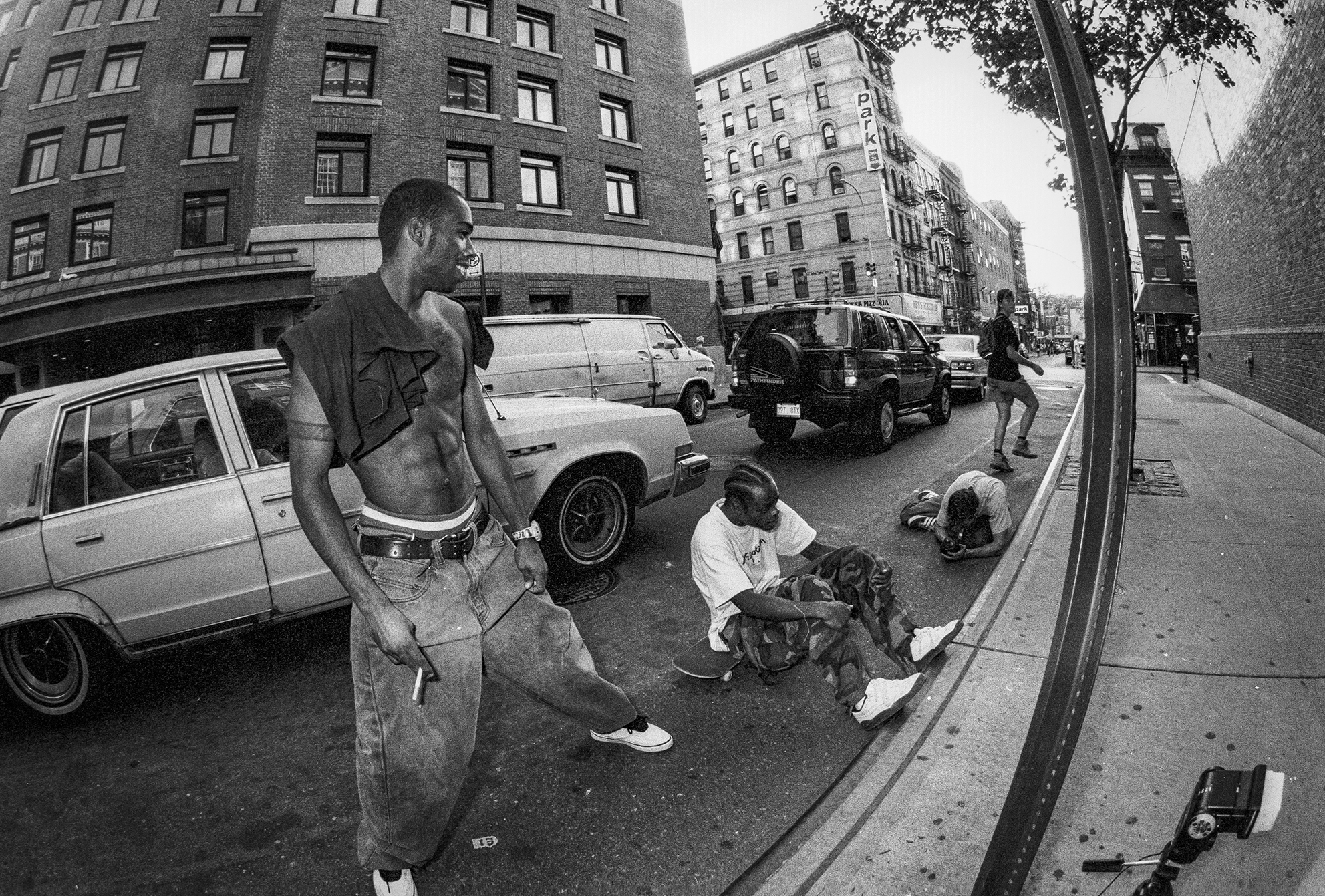
©2021 Elkin Editions, LTD. All Rights Reserved.
Being organic is the key to capturing local culture
――What prompted you to start making All the Streets Are Silent?
Elkin: I think any good documentary starts with a big archival collection. All the best documentaries pull from a large database of unseen footage and tapes. I knew that Eli Morgan Gesner had a crazy collection. We made an agreement that if I digitized all of the tapes, I could maybe do something with them.
――Does that mean you personally proposed the idea for the film to him?
Elkin: Pretty much. Eli wasn’t involved in the story, but he recorded the narration, which was eight hours or something. Another trait of a strong documentary is to let the footage tell itself, and let the people tell the story. I tried to let it just be organic. The story’s a little bit harder to follow, because it’s so organic. It’s not forced.
――That organic nature is true to skate culture, specifically the east coast culture.
Elkin: (laughs) It’s true.

©2021 Elkin Editions, LTD. All Rights Reserved.
――Why did you focus on the decade of 1987-1997?
Elkin: Eli was in school in 1987, and he started at Club Murs and met Yuki in 1988. So the beginning of that footage is that first year. And thenEli’s video, Zoo York’s Mix Tape, was released in ‘97. It felt like a good bookend. That decade is more interesting to me because there’s no digital.
――You interviewed many DJs and skaters for this film, but is there one person in particular that left an impression on you?
Elkin: Kid Capri was the best, and is one of my favorites. The most interesting ones were the ones where I didn’t know the person. That was the first time I met him and I was in his house in New Jersey, in his basement, so it felt extra special. KRS-One had just left his place. We missed him by an hour. Everyone was super cool, so I don’t think there was a bad moment. We did a lot of interviews, like 55.
――Any funny anecdotes from the interviews?
Elkin: I have a lot of good ones that maybe I shouldn’t say on the record (laughs). If I were to choose… I have a good one of Lil Dap from Group Home.
He was wearing a gray Fila tracksuit and put on brand new black leather Fila as he was getting out of the car. So he’s wearing head-to-toe Fila. And he asks, “where do you want me to sit or stand?” and I was like, “right here”, by this metal standpipe. So he goes to sit down and it’s really low, and he’s calling over his cousin. I say, “Dap, are you ready for the interview?” and he goes, “yeah”, calls over his cousin, and takes off his brand new black Filas, and his cousin brings a brand new pair, opens it up. He just switches shoes and goes, “now I’m ready”. That was crazy.
――Even though you were starting to film (laughs)? I wonder why he changed his shoes.
Elkin: Because they were like a block old. He already crossed the street in them. He wanted the freshest sneakers. Even when we were rolling on Kid Capri, he was like, “just a second”, and goes on top of his piano and brings out a long towel with all different types of watches.
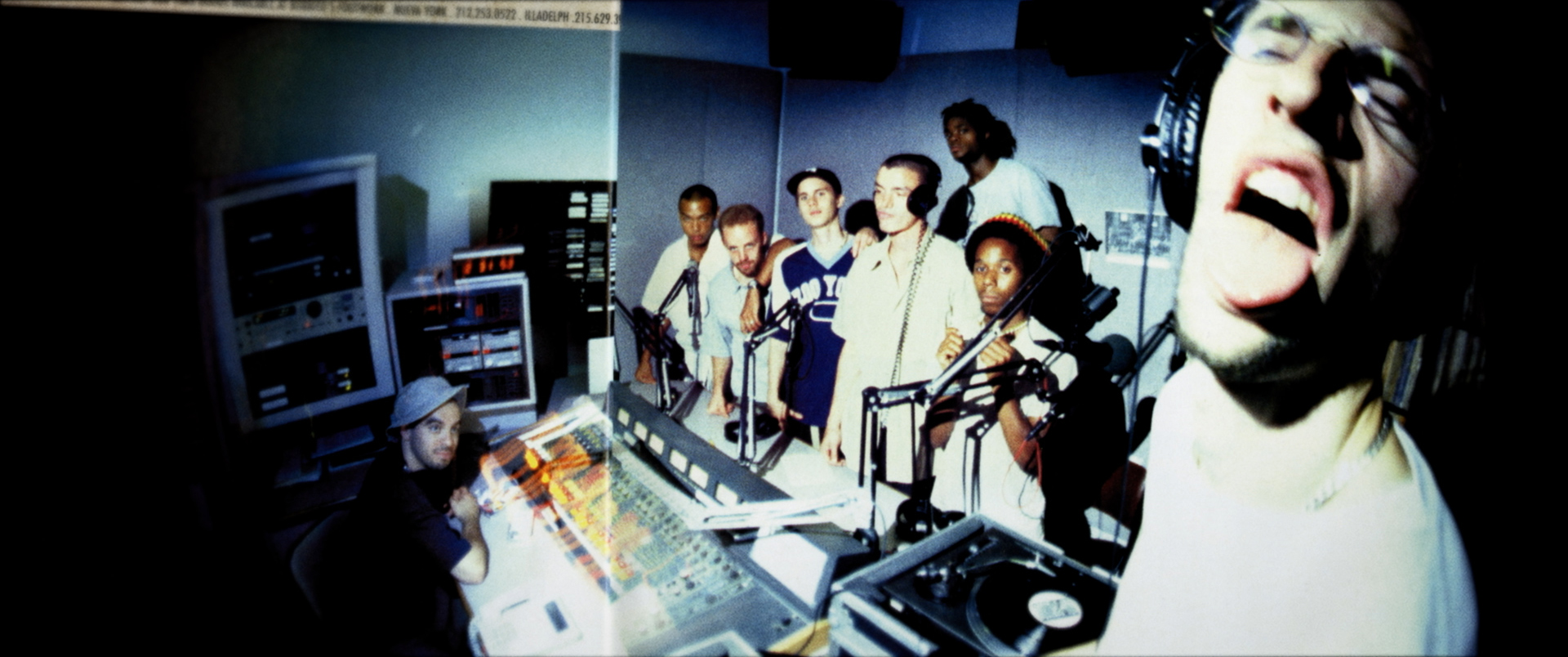
©2021 Elkin Editions, LTD. All Rights Reserved.
――I’d like to talk about Yuki of Club Mars. He’s a Japanese person who’s been active in the New York scene for a long time, and is considered a real legend. This film was the first time I’ve seen footage of him.
Elkin: He discovered Madonna. He’s the best. The Standard Hotel on the High Line on the west side is where the club was. I want everyone to learn about Yuki.
――Large Professor is the music supervisor for the film, too. That’s amazing.
Elkin: We didn’t have a budget to make the film, so we raised a little bit of money at the end to be able to work with him. We showed him the film with really expensive music that we couldn’t pay for. So that’s how the conversation started. We asked him if he could make beats that sounded like these songs. We were going through all his material trying to find what would fit in the right spot and make it sound like a ten-year period. With Large Pro, it was an organic process.
――I’m sure Zoo York is a skateboard company that you love. What is the appeal of it?
Elkin: Zoo York was super important. I think it represented the east coast in a way that others didn’t. And Eli’s design, art direction, and photography was so good. He was also really good at skating, he could do everything, even was a club promoter at Mars. He was a huge legend growing up.
I didn’t even know it was one person, because his graffiti tag was OcuLarge, and his name was Eli Gesner, but then in the Zoo York ad and Supreme ads, it would say “courtesy of EMG”. I didn’t realize that EMG and OcuLarge and Eli Gesner were the same person. I would see EMG or OcuLarge in skateboard magazines or hip-hop magazines. His hand styles are really famous. The Zoo York logo is just his writing. He has an incredible hand style. And he was really close with Bobbito growing up. We talked a bit about it in the movie, but that’s how he got into and filmed all that amazing footage.

A message for the once desolate New York street scene
――Why did you choose the title, All the Streets Are Silent?
Elkin: There were three main reasons why we chose the title. One is the cost. The title I initially wanted was 212. I thought it was the sickest name, so simple and easy to remember. But the AT & T network owns 212. You can’t use it in a commercial sense, and they wanted a lot of money. Eli wanted me to call it Watch Your Step, which was kind of sick. Some of the Supreme guys had names. Everyone was trying to come up with a name at some point. But All the Streets Are Silent was the only name out of ones on my list that didn’t cost money. So I was like, “perfect”.
We registered the name before Covid and the reason why it was on my list of potential names for the film was because New York was kind of dead. The scene was going through a phase where it was a low point, and I felt like skate culture had become too commercialized and mainstream. I was walking down the street and a mannequin had a skateboard and a boombox. It was too much. The industry felt super wack. The title was kind of a metaphor for that. The culture is kind of dead right now, so all the streets are silent. But then Covid happened, and all of the sudden, there was this whole new generation of kids. I show this in the movie a little bit, but there were all of these Supreme kids who were just getting to the right age and getting better at skating, and just cooler.
―― Skating and hip-hop has become trendy and mainstream. Did you have that in mind when making the film?
Elkin: I don’t really care about that. Scale and money has never been the goal. I don’t make things with the idea of profiting. It’s probably bad, I should have more of a business sense. If I want to make something, I try to make it. That’s what this film is, really.
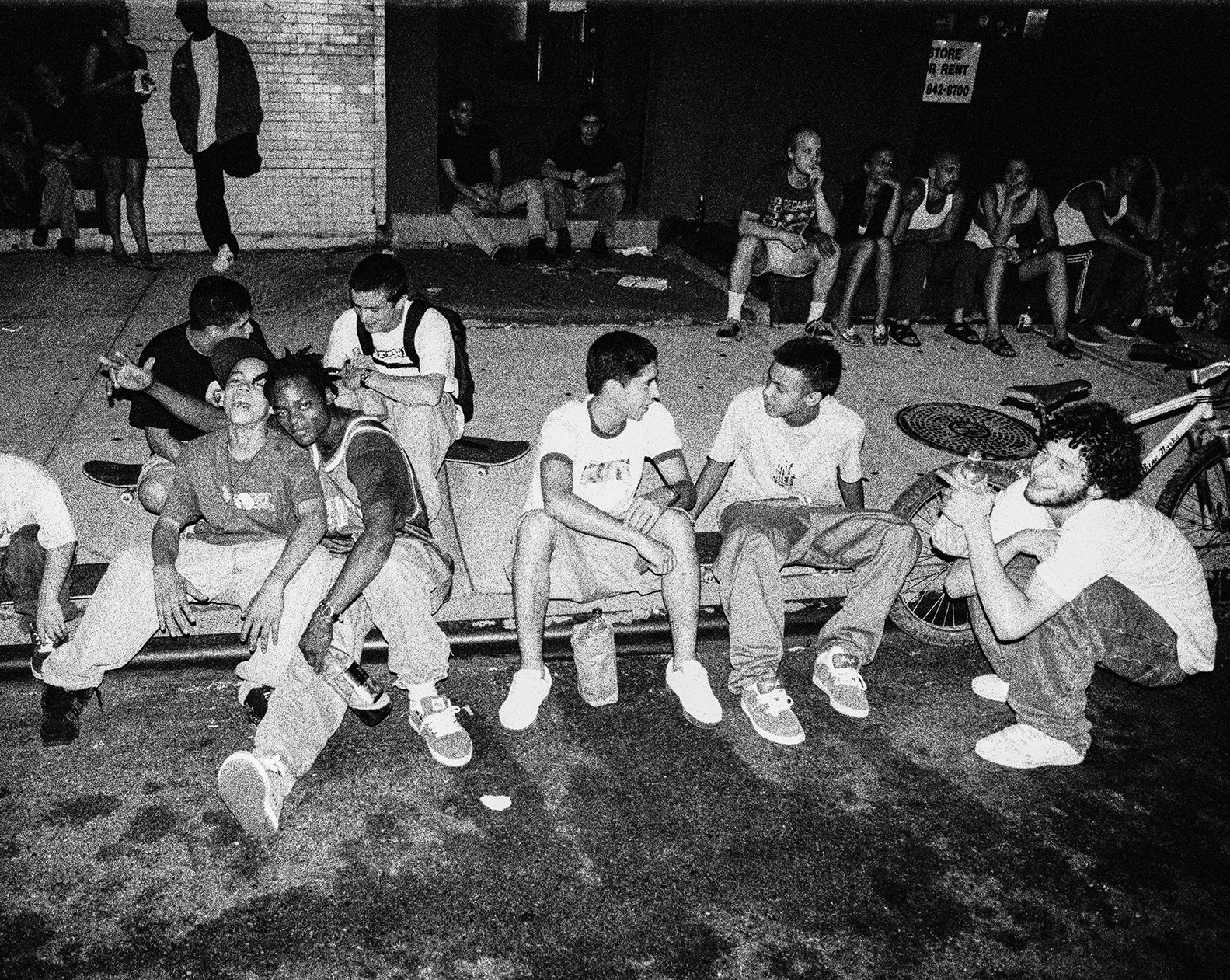
©2021 Elkin Editions, LTD. All Rights Reserved.
――I liked seeing a new culture being born out of skateboard and hip-hop culture organically intertwining on local New York streets.
Elkin: The thing that skate and hip-hop culture have in common is that you can’t really be in either world and be fake. It’s very hard to have friends who skate or dig for records or spin and go to listening rooms, or who sit on a curb and skate and also be half in. It doesn’t really work. It’s all or nothing.
What I’ve seen from growing up in Montreal and skating in New York is, that person who’s kind of faking it, either the group moves away from them or they just straight up tell them “you can still hang with us, but don’t skate anymore”.
Now, in skateboarding, everyone is hugging. It’s so different, there’s so much embrace. It’s like, “you just skated for the first time, high five!” It’s kind of weird. There’s so much forced positivity that was never a part of skate culture before.
――It’s so big now that it’s become an Olympic sport.
Elkin: I think it was always like that in LA, but now it’s like that everywhere, it seems. A dude who looks like a businessman can skate on a longboard, it’s weird. As my friend says in New York, we’re in the “everyone skates” era right now. And then in five years, it’ll be the “no one skates” era.
――To end the interview, what is a message you have for those going to see the film?
Elkin: Whatever you’re into, get into it hard. Go down a rabbithole and learn as much as you can. It’s not for me, but someone could do a film about 1997-2007. Do it with the same intensity. Right now, the decade we’re in, 2017-2027, there could be another. History repeats itself. Every five or ten years, there’s a new scene and energy. It’d be cool to keep seeing these moments happen. We’re probably in the middle of one right now.
I would say whatever you do, do it 100%. Get super into your craft. Don’t just have a skateboard as an object. Destroy it, use it. Same thing with these kids who wait in line to buy shoes… Wear the shoes. I hope that that comes back. I think it’s so insane what they do now. They’re so precious with their objects, that their home is like a museum. To me, it’s a little ridiculous. It’s the same thing when people buy records and keep them sealed. What are you doing? (laughs).
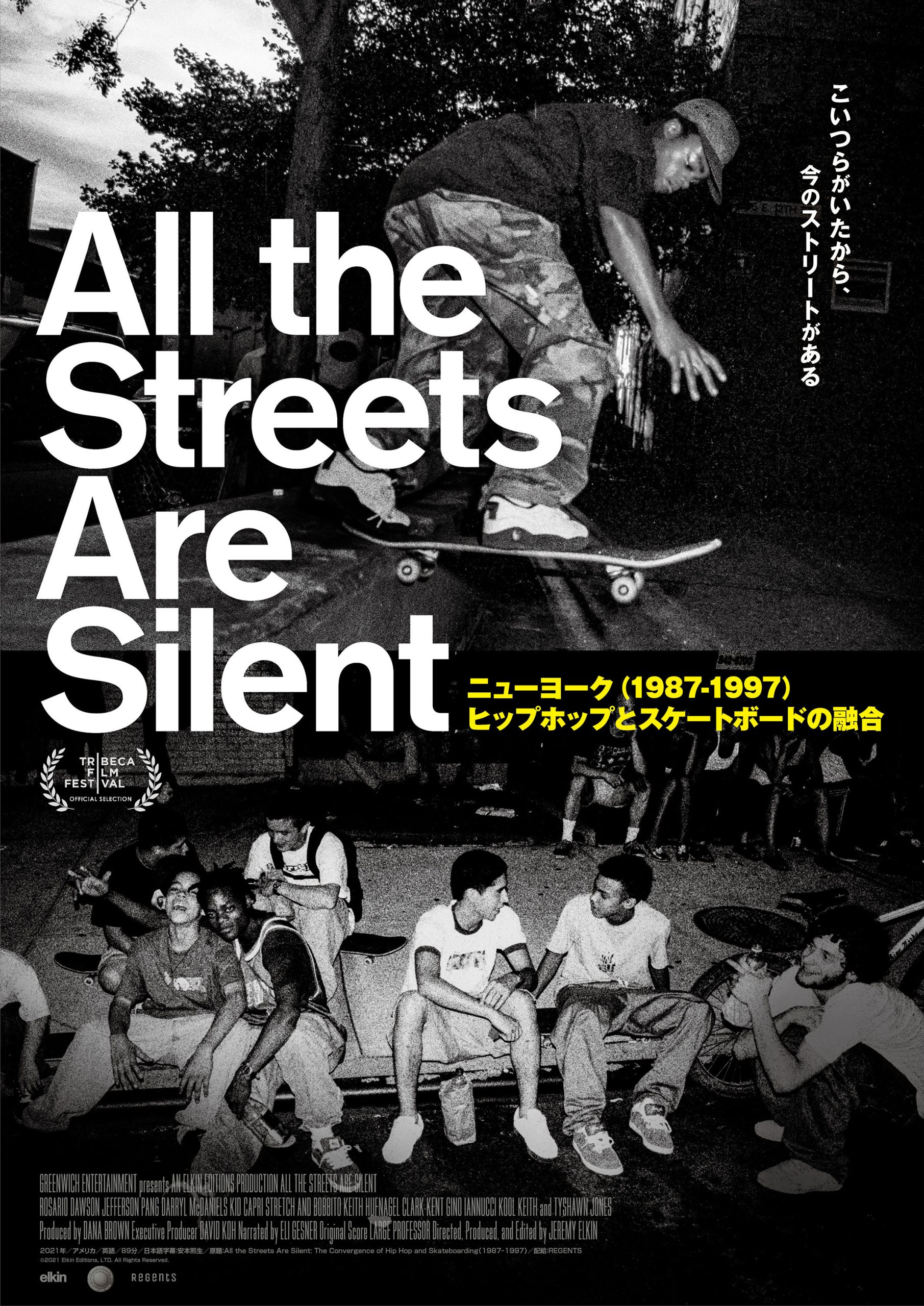
©2021 Elkin Editions, LTD. All Rights Reserved.
■All the Streets Are Silent: The Convergence of Hip-Hop and Skateboarding (1987-1997)
Directed: Jeremy Elkin
Narration: Eli Morgan Gesner
Music: Large Professor
Executive Producer: David Koh
Producer: Dana Brown, Jeremy Ellkin
https://atsas.jp
Twitter:@RegentsMovie
Instagram:@regentsmovie
Photography Atsuko Tanaka

